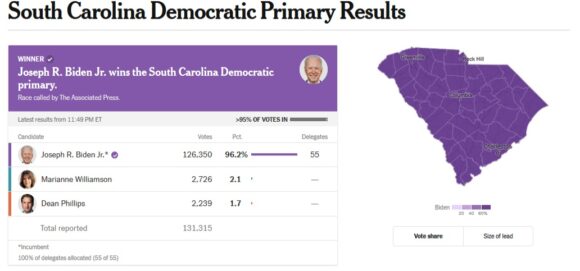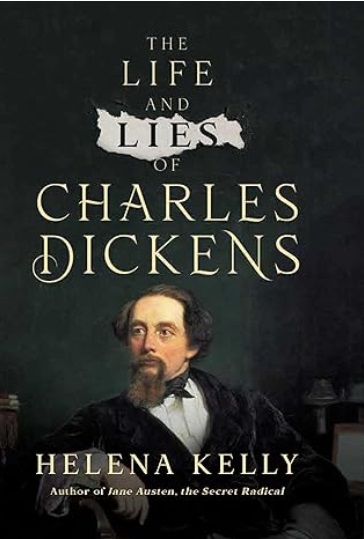
Dear Commons Community,
Jonathon Cohn of The Huffington Post did an analysis yesterday comparing Joe Biden and Donald Trump as the presumed presidential candidates in the November election. His basic message is that this election will be very different from 2020.
Below is his entire article.
Go0od commentary!
Tony
—————————————————————————
The Huffington Post
Why A Second Trump-Biden Matchup Won’t Be A Rerun Of The 2020 Election
We know more about Trump — and more still about Biden — than we did four years ago.
By Jonathan Cohn
Feb 2, 2024, 05:53 PM EST
“We’re back where we started.”
I heard CNN’s Dana Bash say that last Sunday morning, while I was half-listening to the talk shows. I knew instantly what she meant.
A rematch of Joe Biden and Donald Trump in the 2024 presidential race now seems virtually inevitable. And it doesn’t just feel familiar. It feels like the same exact race we saw last time ― the same old men, saying the same old things they always say, except now they’re even older and (in one or both cases, maybe) less mentally acute.
It seems boring, disappointing or exasperating to lots of people, and you might be one of them. I get that. But I also think it’s easy to overlook the ways in which Biden-Trump 2.0 would be dramatically different from the first time around ― and why that should matter in November, when Americans will have to decide on a president for the next four years.
The most obvious difference is the circumstances of the election: what’s happening in the nation and the world, and what challenges that means for whoever will serve in the White House.
Back in 2020, the campaign took place right as COVID-19 was first spreading, creating a once-in-a-lifetime public health crisis. This election is unfolding amid a pair of violent international crises, the conflicts in Ukraine and Gaza.
The main economic challenge in 2020 was to prop up the economy as the pandemic threatened to shut it down. Today, the main challenge with the economy is to keep it running without letting it overheat.
Violent crime is now going down instead of up. Illegal border crossings are going up instead of down. And of course, in 2020, abortion was still a right throughout the U.S., albeit with restrictions. Now it exists only in some states, and is under threat in others.
But there’s another, less obvious difference between 2020 and 2024, and it might matter even more. Today, we know a great deal more about the two men who are likely to appear on the ballot.
What We’ve Learned About Trump
By 2020, Trump had said enough to suggest he might not accept the results of an election he lost fairly, and might even try to contest the outcome. But it wasn’t until Jan. 6, 2021, that he showed he would actually follow through on those impulses, up to the point of provoking an armed insurrection in order to stop Congress from certifying the electoral vote.
Since then, Trump has repeatedly threatened to continue down this path of flouting democratic principles and the rule of law, whether it would be by pardoning the Jan. 6 rioters or having the Justice Department prosecute the political foes he calls “vermin.”
Meanwhile, high-profile conservative advocates, including some former Trump administration officials, have put together “Project 2025,” a 1,000-page strategic blueprint for how Trump might govern in a second term. It includes a plan to fire as many as 50,000 federal workers, as part of an effort to fight the so-called “deep state.”
he intended to act like a dictator. “Only on day one,” Trump said. In 2020, you could maybe find an excuse to dismiss such talk. In 2024, you really can’t.
The same goes for allegations of serious transgressions in Trump’s professional and personal lives, which dogged Trump long before he ran for president. It was not until 2022 that juries found the Trump Corporation guilty of tax fraud and found Trump personally liable for sexually abusing writer E. Jean Carroll in the 1990s and then defaming her by denying it publicly.
Those are some pretty important data points for voters to consider, with more to come depending on how and when the other legal proceedings involving Trump unfold.
But it’s Biden about whom we’ve probably learned the most, because in 2020 it was impossible to know what kind of president he’d actually be. Now we do.
What We’ve Learned About Biden, Part 1
As a candidate, Biden embraced a sweeping, potentially historic agenda on domestic policy, a plan that included once-in-a-generation infrastructure efforts, a wholesale reimagining of child and elder care and transformational investments in clean energy. But Democratic candidates for president almost always talk big.
As a senator and then as vice president, Biden had focused much more on the judiciary and foreign policy. It was easy to assume he wasn’t fully committed to his campaign agenda, or that he wouldn’t actually try to pursue it.
Boy, was that assumption wrong.
Biden pushed forward with the big ideas, initially attempting to wrap them into one giant legislative package he called “Build Back Better.” He deferred heavily to Democratic leaders in Congress and was not afraid to pass legislation on party-line votes, though he simultaneously pursued bipartisan legislation where he saw an opportunity.
Not every decision worked out. There’s a strong case that narrowing the agenda even a little bit might have achieved more, or at least moved the process along more quickly.
But while Biden had to jettison some parts of the agenda and scale back others, he ended up achieving more than any reasonable analyst could have expected, affixing his signature to major initiatives that are now pouring hundreds of billions of dollars into infrastructure, semiconductor development and clean energy ― and bringing down prescription drug prices, too.
What We’ve Learned About Biden, Part 2
On foreign policy, the most revealing episodes of Biden’s presidency have arguably been the withdrawal of American forces from Afghanistan and his position on the wars in Ukraine and Gaza. They represent very different challenges, though it’s possible to see some patterns in Biden’s approach.
One constant has been his attention to and management of international alliances. With Ukraine, he has managed to lead a policy response that’s been relatively free of dissent from America’s top international allies. In Gaza, he has maintained a united diplomatic front with Saudi Arabia and other regional players that, he hopes, will be the foundation of a post-war reconstruction and peace arrangement (as reported weeks ago by HuffPost’s Akbar Shahid Ahmed).
The other constant is a firm conviction about right and wrong and what needs to be done, regardless of what Biden is hearing from critics, even in his own administration. It was obvious with the withdrawal from Afghanistan, which so many members of his military and diplomatic establishment resisted or tried to slow down. It is even more obvious now with his support for Israel, despite a growing outcry over what Israel’s response to the Oct. 7 attack by Hamas has meant for the people of Gaza.
In both cases, it seems clear Biden is following his own inner compass. In Afghanistan, that compass points him toward getting American soldiers out of what he believed was a hopeless endeavor ― a perspective likely informed by having a son who served in the military.
In the Middle East, the compass points him toward supporting an Israel he views primarily as an embattled refuge for the Jewish people. That view is a lot more common among older officials who formed their opinions in the era of Golda Meir and the Yom Kippur War, while the Holocaust was a fresher memory and Israel was repeatedly battling Arab military forces.
How you process all of this will obviously depend on your values, sympathies and priorities, and in some cases, on how you settle your own internal conflicts.
But whatever you think about Biden ― and whatever you think of Trump, for that matter ― you have a lot more information today than you did in 2020.
It may be the same old men on the ballot. That doesn’t mean it will be the same old election.












